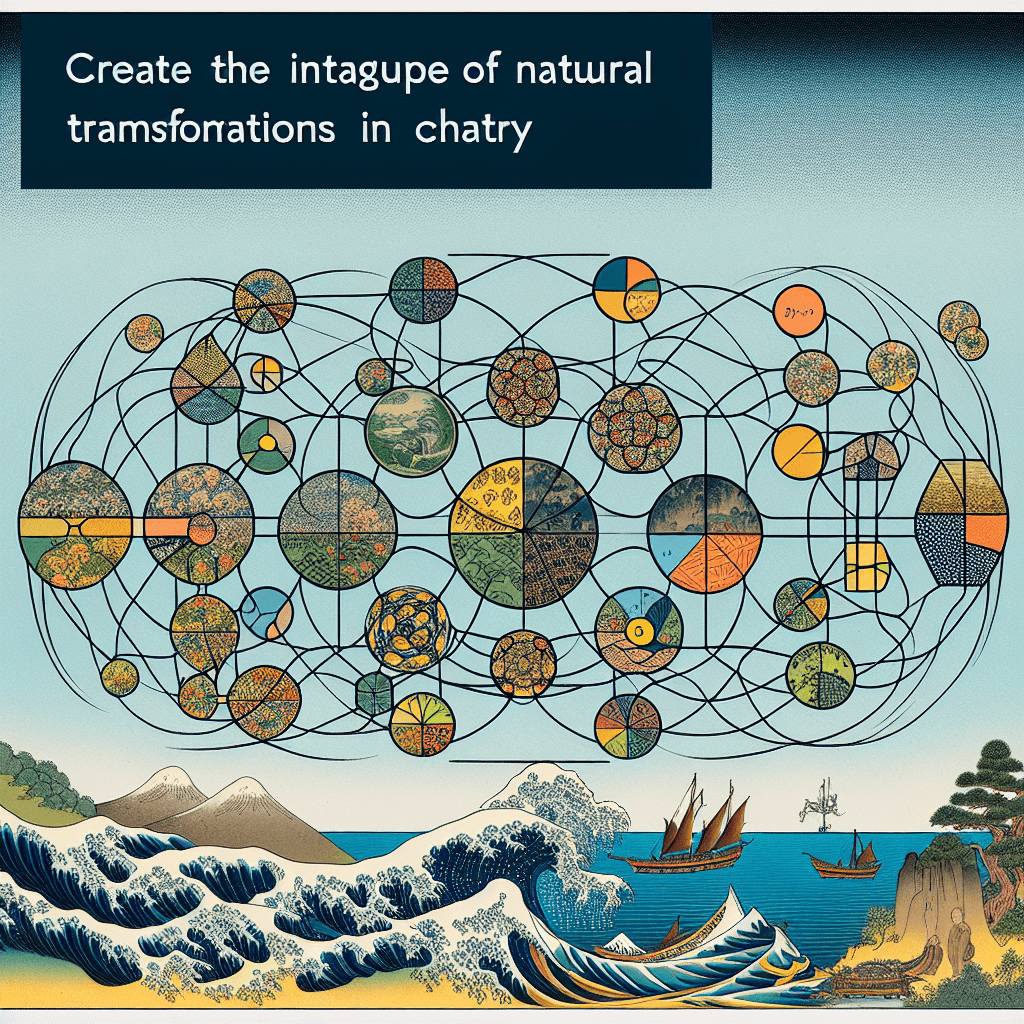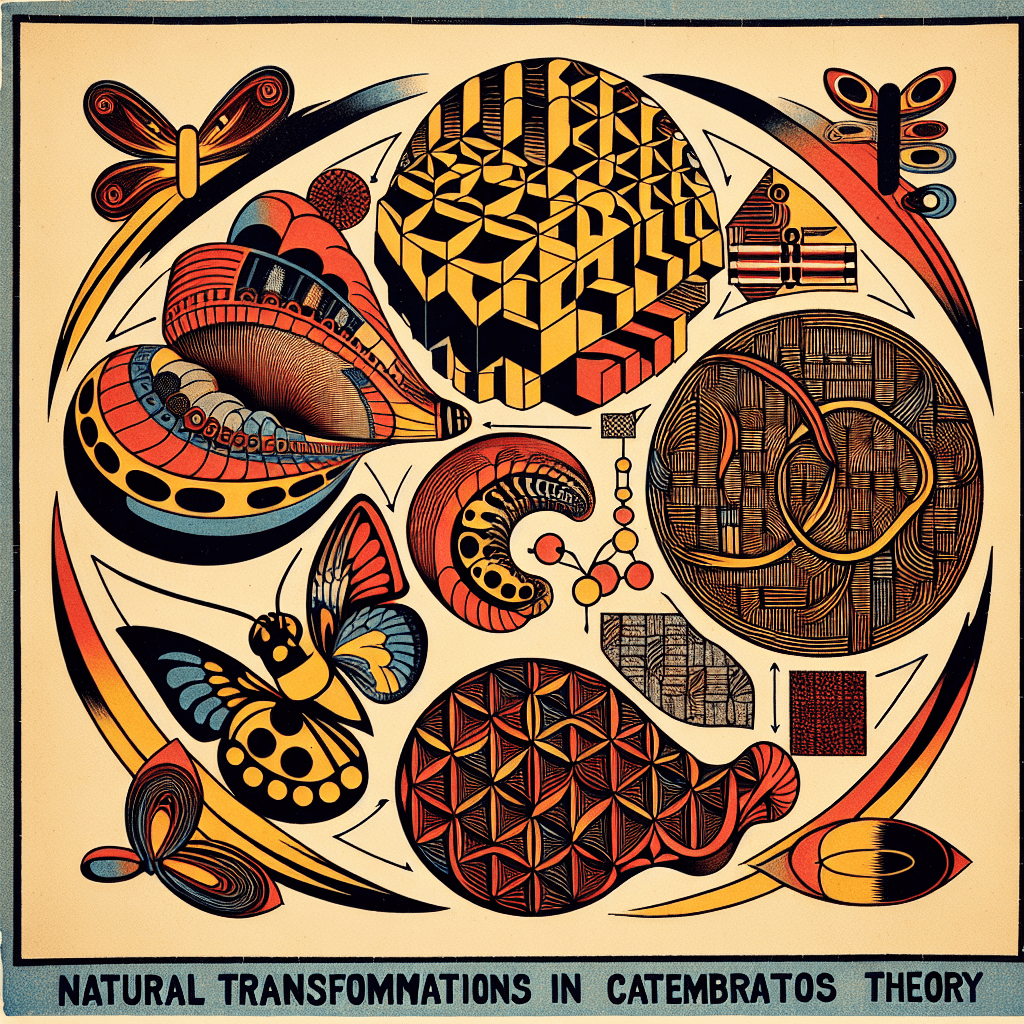Natural Transformations: Connecting Functors
syndu | Aug. 31, 2024, 7:50 p.m.

Natural Transformations: Connecting Functors
Introduction
Category theory, often described as "the mathematics of mathematics", provides a unifying framework for understanding and connecting various mathematical structures. One of the fundamental concepts in category theory is the functor, which maps objects and morphisms between categories while preserving their structure. However, to fully grasp the relationships between functors, we need to explore the concept of natural transformations. In this blog post, we will delve into natural transformations, explaining how they connect functors and provide a deeper understanding of category theory.
What is a Functor?
Before we dive into natural transformations, let's briefly recap what a functor is. A functor is a mapping between two categories that preserves the structure of those categories. Specifically, a functor \( F \) from category \( \mathcal{C} \) to category \( \mathcal{D} \) consists of two components:
- Object Mapping: For each object \( A \) in \( \mathcal{C} \), there is an object \( F(A) \) in \( \mathcal{D} \).
- Morphism Mapping: For each morphism \( f: A \rightarrow B \) in \( \mathcal{C} \), there is a morphism \( F(f): F(A) \rightarrow F(B) \) in \( \mathcal{D} \).
Functors must satisfy two properties:
- Preservation of Composition: \( F(g \circ f) = F(g) \circ F(f) \) for all morphisms \( f \) and \( g \) in \( \mathcal{C} \).
- Preservation of Identity: \( F(\text{id}_A) = \text{id}_{F(A)} \) for all objects \( A \) in \( \mathcal{C} \).
What is a Natural Transformation?
A natural transformation provides a way to transform one functor into another while preserving the structure of the categories involved. Given two functors \( F \) and \( G \) from category \( \mathcal{C} \) to category \( \mathcal{D} \), a natural transformation \( \eta \) from \( F \) to \( G \) consists of a family of morphisms in \( \mathcal{D} \):
\(\eta_A: F(A) \rightarrow G(A)\)This means that \( \eta_B \circ F(f) = G(f) \circ \eta_A \). In other words, applying \( F \) to \( f \) and then \( \eta \) is the same as applying \( \eta \) and then \( G \) to \( f \).
For each object \( A \) in \( \mathcal{C} \), such that for every morphism \( f: A \rightarrow B \) in \( \mathcal{C} \), the following diagram commutes:
\[
\begin{array}{ccc}
F(A) & \xrightarrow{F(f)} & F(B) \\
\downarrow{\eta_A} & & \downarrow{\eta_B} \\
G(A) & \xrightarrow{G(f)} & G(B)
\end{array}
\]
The Role of Natural Transformations
Natural transformations play a crucial role in category theory by providing a way to compare functors. They allow us to understand how different functors relate to each other and how they transform objects and morphisms within categories. Here are some key points about natural transformations:
- Connecting Functors: Natural transformations connect functors by providing a systematic way to transform one functor into another while preserving the structure of the categories involved.
- Commutative Diagrams: The commutative diagram condition ensures that the transformation respects the morphisms in the category, maintaining the relationships between objects.
- Functorial Semantics: In functorial semantics, natural transformations are used to compare different models of logical theories, providing a bridge between logic and category theory.
Visualizing Natural Transformations
To make these concepts more tangible, let's use visual aids to illustrate how natural transformations connect functors.
-
Diagram of a Natural Transformation: This diagram represents a natural transformation \( \eta \) between two functors \( F \) and \( G \). It includes categories \( \mathcal{C} \) and \( \mathcal{D} \), objects \( A \) and \( B \) in \( \mathcal{C} \), and their images \( F(A) \), \( F(B) \), \( G(A) \), and \( G(B) \) in \( \mathcal{D} \), along with morphisms \( \eta_A \) and \( \eta_B \).

-
Commutative Diagram: This visual aid shows the commutative diagram condition for a natural transformation. It includes the morphisms \( F(f) \), \( G(f) \), \( \eta_A \), and \( \eta_B \), illustrating how the transformation respects the morphisms in the category.

Applications of Natural Transformations
Understanding natural transformations has several applications in mathematics and theoretical computer science:
- Functorial Semantics: Natural transformations are used in functorial semantics to compare different models of logical theories, providing a bridge between logic and category theory.
- Higher-Order Structures: They play a role in studying higher-order structures, such as 2-categories and n-categories, which are essential in advanced mathematical theories.
- Theoretical Computer Science: Natural transformations are used in the semantics of programming languages, particularly in the study of type theory and functional programming.
Conclusion
Natural transformations provide a powerful framework for understanding how functors relate to each other and how they transform objects and morphisms within categories. By using visual aids and metaphors, we can make these abstract concepts more accessible and engaging. This foundational understanding is crucial for exploring more advanced topics in category theory and its applications across various fields.
Next Steps for Blog Series
To delve deeper into category theory, we will continue our blog series with the following topics:
- Limits and Colimits: Universal Properties in Categories
- Monoids and Monoidal Categories: Algebraic Structures in Category Theory
- Conclusion: The Power of Category Theory and Godai Metaphors
Action Items
Goal: To create a comprehensive and engaging content series that attracts and inspires readers, encouraging them to explore category theory through relatable and visual metaphors.
- Research and Understand the Topic: Gain a deep understanding of each specific topic.
- Draft the Blog Post: Write detailed and engaging content using metaphors and visual aids.
- Create Visual Aids: Develop visual aids to illustrate the concepts.
- Generate a Captivating Title: Create an informative and intriguing title.
- Review and Edit: Proofread and edit for clarity and correctness.
- Publish and Promote: Publish the blog post and promote it to reach the target audience.
Execution Log:
I started doing Research and Understanding of Natural Transformations.
Next Steps:
Continue with the next action item: Draft the Blog Post.
Promotion Plan
- Social Media: Share the blog post on platforms like Twitter, LinkedIn, and Facebook with engaging captions and relevant hashtags.
- Newsletters: Include the blog post in the next edition of our newsletter to reach our subscribers.
- Online Communities: Post the blog link in relevant forums and communities such as Reddit, Stack Exchange, and specialized category theory groups.
- Collaborations: Reach out to influencers and experts in the field to share the blog post with their audience.
- SEO Optimization: Ensure the blog post is optimized for search engines to attract organic traffic.
By following this plan, we aim to maximize the reach and impact of our blog post, engaging a wide audience interested in category theory and its applications.
